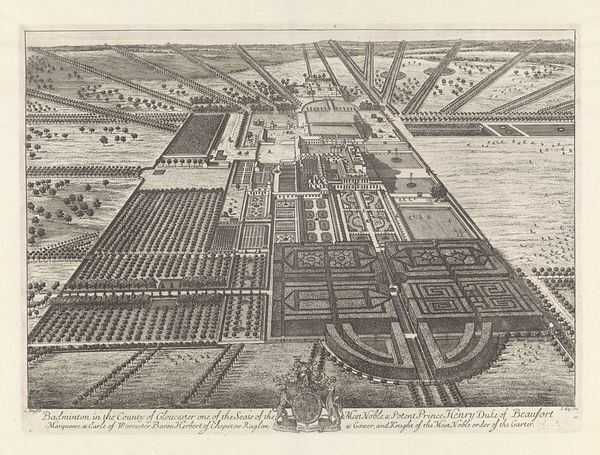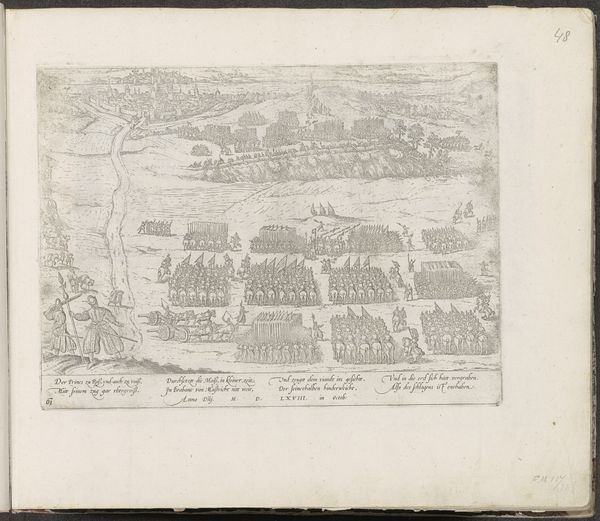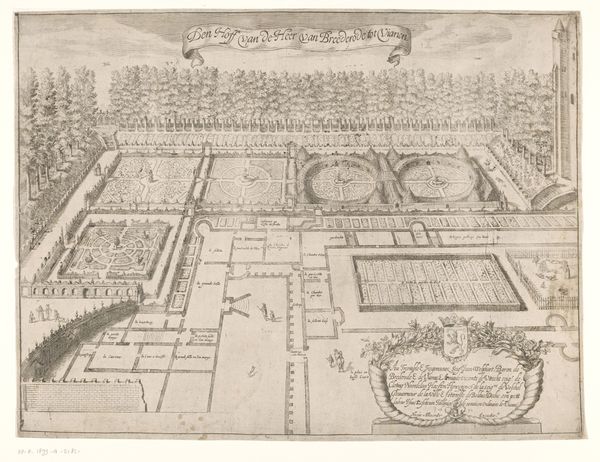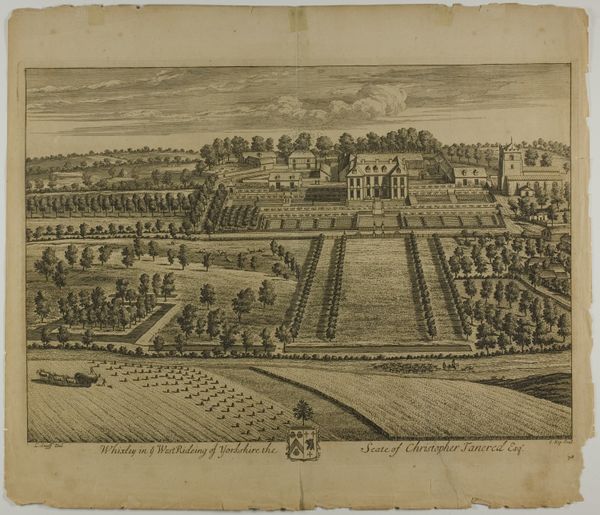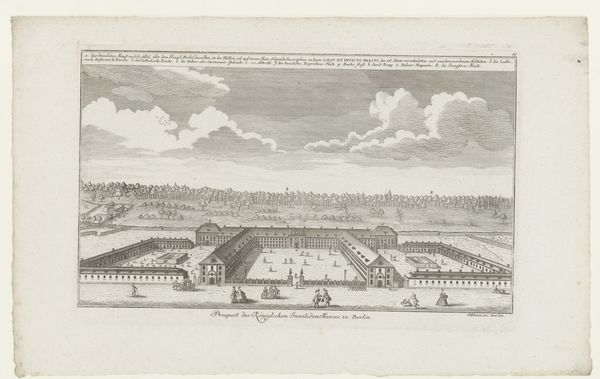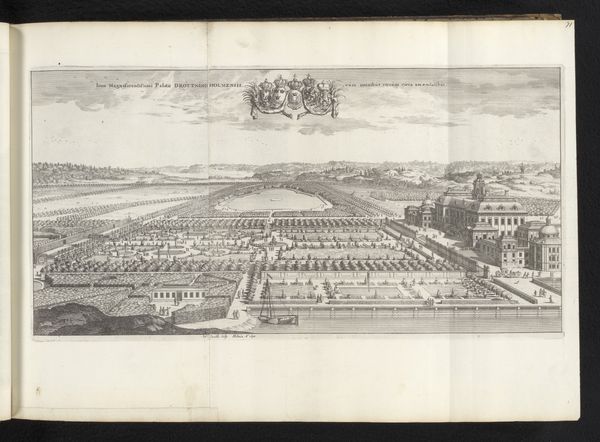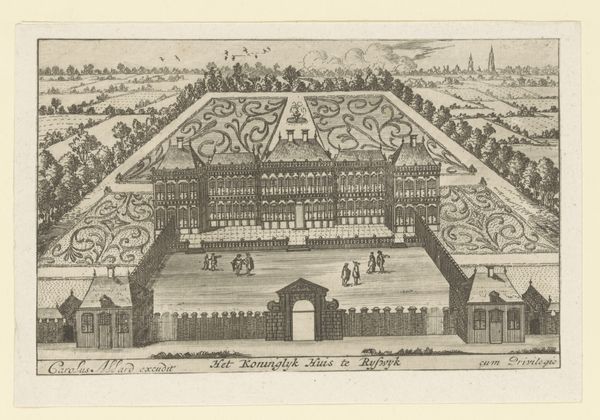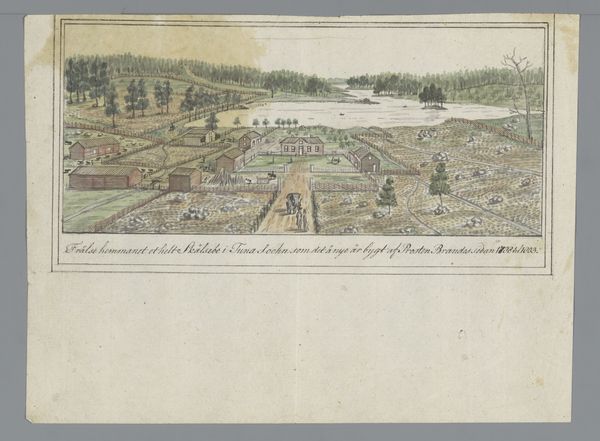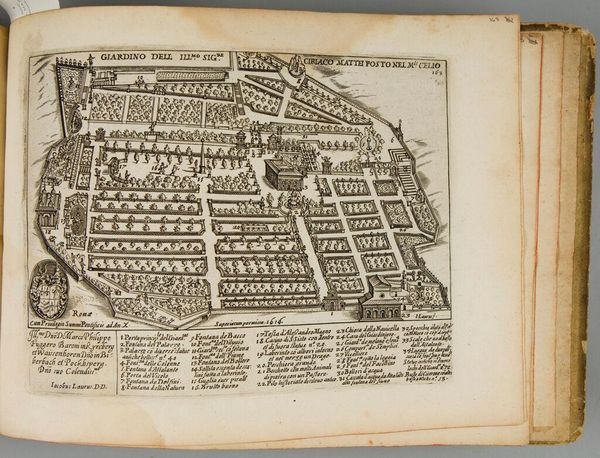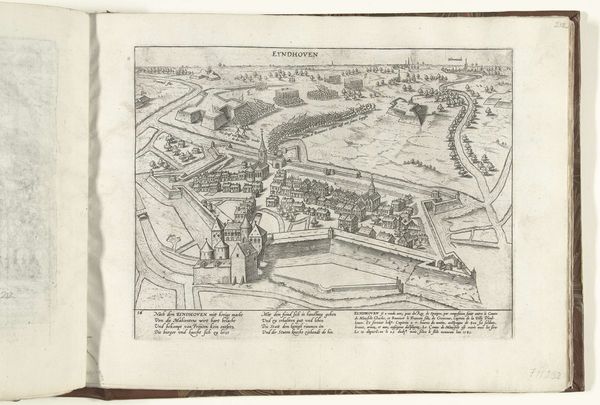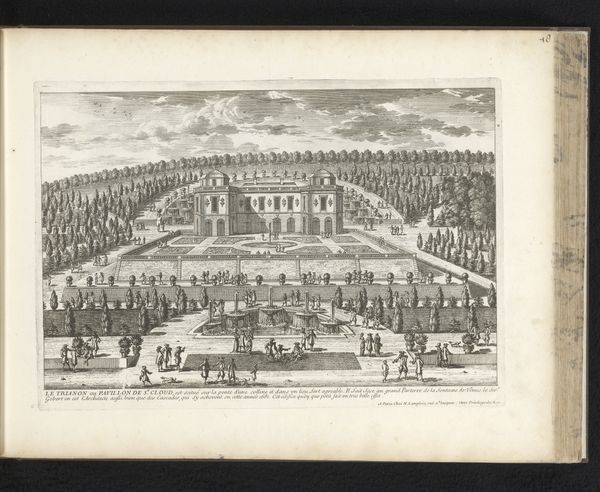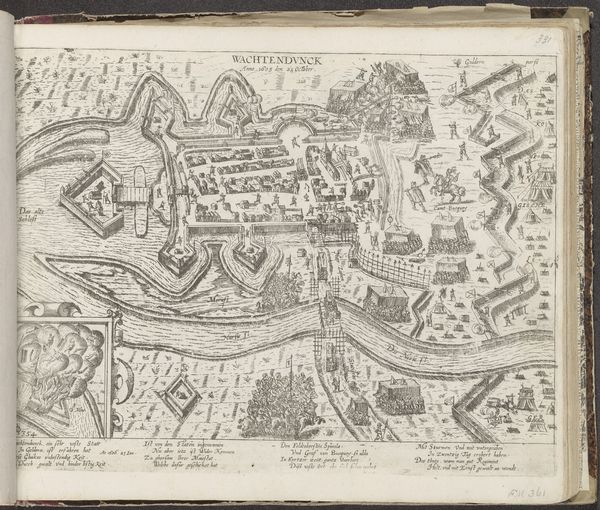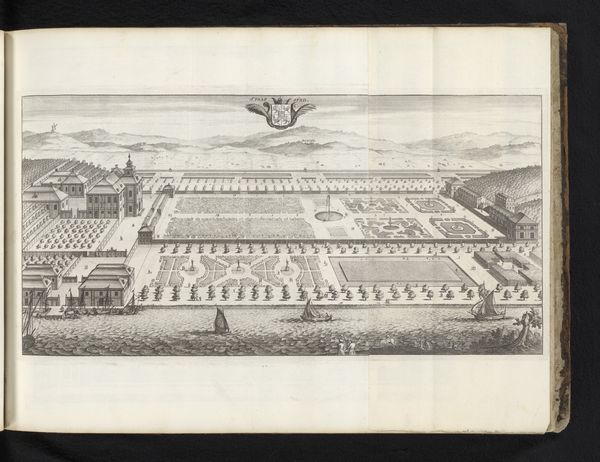
drawing, paper, ink
#
drawing
#
asian-art
#
landscape
#
paper
#
ink
Dimensions: height 155 mm, width 195 mm
Copyright: Rijks Museum: Open Domain
Editor: So this drawing, "Huis en landgoed Brandes buiten Batavia," possibly from 1785 by Jan Brandes, is a detailed rendering in ink on paper. It seems like a landscape…almost architectural. It's got a real storybook feel, but I'm not sure what the story is. What symbols are most apparent to you? Curator: It’s interesting that you call it storybook, because the map and landscape styles invite us to imagine ourselves within that scene. Notice how Brandes blends precision with pictorial elements; maps are documents of power, not passive records. He literally owns what he represents here. The house in the drawing looms. Is this an aspirational vision of order and command, or is Brandes representing it for administrative or financial reasons? Editor: Hmm, control, power. So that meticulousness points to a colonizer perspective asserting dominion over this land, maybe even extracting wealth and resources? Curator: Precisely. The grid-like garden, the clear delineation of space…those are visual signifiers of imposed order and transformation of nature, an aesthetic declaration that resonates with colonialism across time and cultures. Note the handwritten script surrounding the picture, the way the words hold it in place, like it has something more to say to the careful viewer. How would a local Indonesian person react to that in 1785? Editor: Right. This isn't just a pretty landscape drawing, it’s a loaded depiction. That makes me rethink my initial response quite a bit. There's definitely something unsettling in the picture now that you bring it up. Curator: The weight of cultural memory shapes how we perceive such images. Even though this piece is delicate and precise, understanding its origins adds a layer of complexity. What did we miss?
Comments
No comments
Be the first to comment and join the conversation on the ultimate creative platform.
